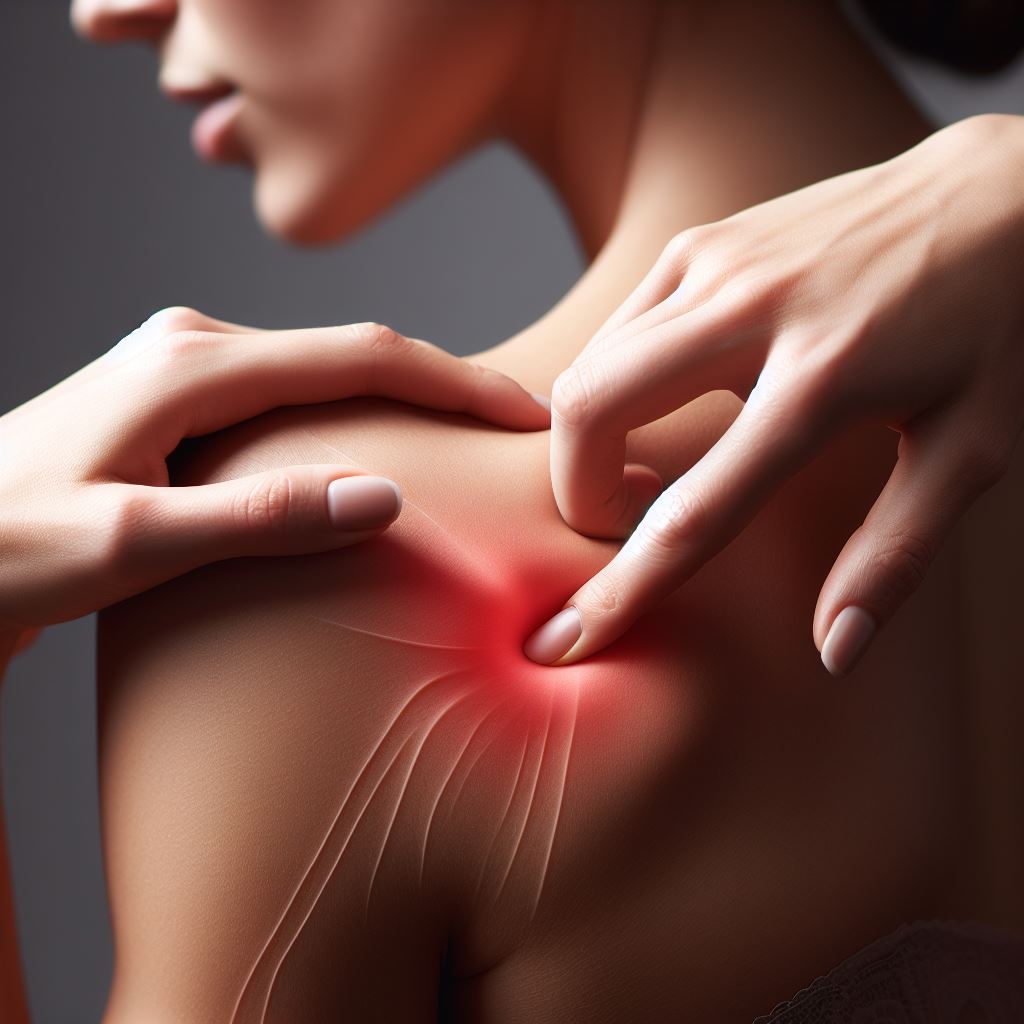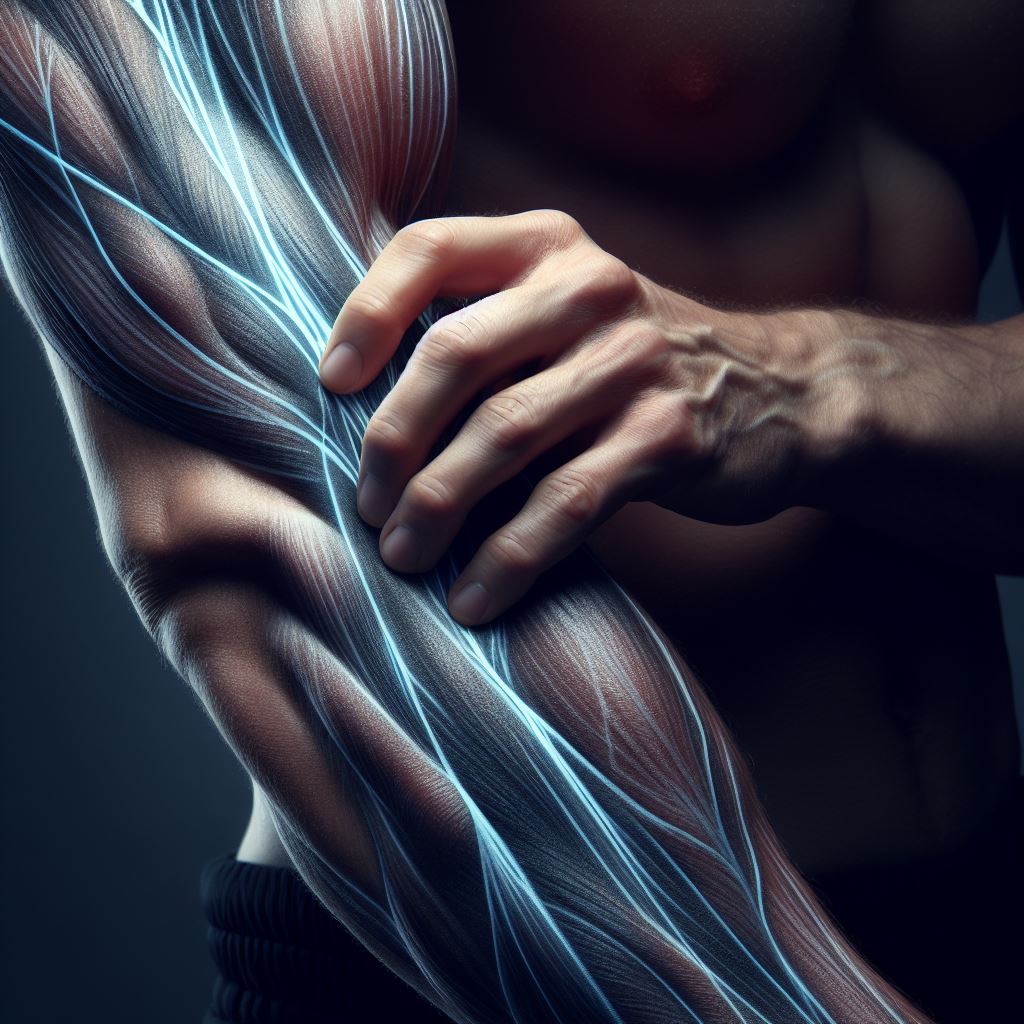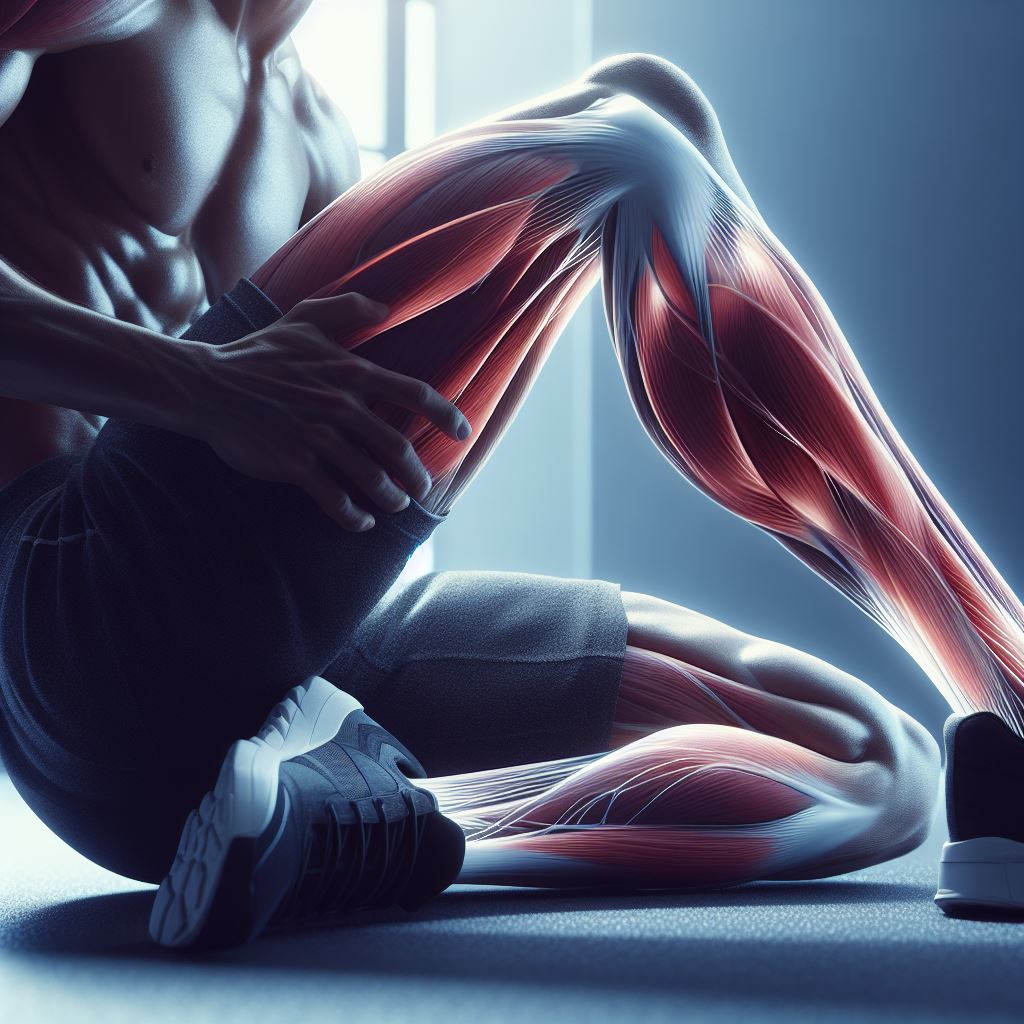Do you suffer from chronic muscle pain, stiffness, or tension? Do you want to improve your posture, mobility, and flexibility? Do you need a way to relax and unwind after a stressful day? If you answered yes to any of these questions, then you might benefit from deep tissue massage.
Deep tissue massage is a type of massage therapy that uses firm pressure and slow strokes to reach deeper layers of muscle and fascia. Unlike other types of massage that focus on relaxation and superficial touch, deep tissue massage aims to release chronic muscle tension, break up scar tissue, and restore normal function.
Deep tissue massage can help with various health conditions and injuries, such as low back pain, neck pain, whiplash, fibromyalgia, osteoarthritis, sports injuries, and more . It can also reduce stress, anxiety, blood pressure, and heart rate .
In this article, we will introduce you to five deep tissue massage techniques that can help you relieve muscle pain and improve your well-being. These techniques are:
- Myofascial Release
- Cross Fiber Friction
- Active Release Technique
- Trigger Point Therapy
- Muscle Energy Technique
We will explain what each technique is, how it works, what benefits and effects it has, what areas or problems it can address, what precautions or contraindications it has, and how to perform it. We will also provide some examples or illustrations for each technique.
By the end of this article, you will have a better understanding of deep tissue massage and how it can help you. You will also learn how to find a qualified therapist for deep tissue massage and how to try it for yourself or as a gift for someone you care about.
Myofascial Release: What It Is and How It Works

Myofascial release is a technique that involves slow and sustained pressure to release tension and restrictions in the fascia, the connective tissue that surrounds the muscles and organs. Fascia is a thin, tough, elastic type of connective tissue that wraps most structures within the human body, including muscle. Fascia supports and protects these structures. Osteopathic practice holds that this soft tissue can become restricted due to psychogenic disease, overuse, trauma, infectious agents, or inactivity, often resulting in pain, muscle tension and corresponding diminished blood flow .
The purpose of myofascial release is to restore free and unimpeded motion of all soft tissues, to release entrapped nerves, vasculature and lymphatics, and to re-establish optimal texture, resilience and function of soft tissues. By applying gentle pressure and stretching the fascia, myofascial release can help to break up scar tissue, improve blood circulation, reduce inflammation, and relieve pain.
The Benefits and Effects of Myofascial Release
Myofascial release can have various benefits and effects for different health conditions and injuries. Some of the common benefits and effects are:
- Reducing chronic pain and stiffness in conditions such as fibromyalgia, myofascial pain syndrome, low back pain, neck pain, headaches, and whiplash.
- Improving posture, mobility, and flexibility by correcting muscular imbalances and restoring normal range of motion.
- Enhancing athletic performance and recovery by preventing or treating sports injuries, increasing muscle strength and endurance, and improving joint stability.
- Promoting relaxation and stress relief by releasing emotional tension stored in the fascia and stimulating the parasympathetic nervous system.
The Areas or Problems That Myofascial Release Can Address
Myofascial release can be used to address various areas or problems in the body. Some of the common areas or problems are:
- The back: Myofascial release can help to relieve back pain caused by tight or spasmed muscles, herniated discs, sciatica, scoliosis, or poor posture. It can also help to improve spinal alignment and decompress the nerves.
- The neck: Myofascial release can help to relieve neck pain caused by muscle tension, whiplash, cervical spondylosis, or headaches. It can also help to improve cervical mobility and reduce stress.
- The shoulders: Myofascial release can help to relieve shoulder pain caused by rotator cuff injuries, frozen shoulder, bursitis, tendinitis, or impingement syndrome. It can also help to improve shoulder function and range of motion.
- The hips: Myofascial release can help to relieve hip pain caused by osteoarthritis, bursitis, piriformis syndrome, iliotibial band syndrome, or hip flexor tightness. It can also help to improve hip stability and mobility.
- The legs: Myofascial release can help to relieve leg pain caused by shin splints, plantar fasciitis, Achilles tendinitis, hamstring strains, or calf cramps. It can also help to improve leg circulation and flexibility.
The Precautions or Contraindications for Myofascial Release
Myofascial release is generally a safe and effective technique for most people. However, there are some precautions or contraindications that should be considered before undergoing myofascial release. Some of the common precautions or contraindications are:
- Acute injuries or inflammation: Myofascial release should not be applied to areas that are swollen, bruised, bleeding, or infected. It may aggravate the condition or cause further damage. Wait until the acute phase is over before using myofascial release.
- Fractures or dislocations: Myofascial release should not be applied to areas that have broken bones or dislocated joints. It may interfere with the healing process or cause complications. Seek medical attention before using myofascial release.
- Osteoporosis or osteopenia: Myofascial release should not be applied with too much force or pressure to areas that have weak or brittle bones. It may cause fractures or injuries. Use gentle pressure or avoid using myofascial release on these areas.
- Cancer or tumors: Myofascial release should not be applied to areas that have cancerous or malignant tumors. It may spread the cancer cells or cause harm. Consult your doctor before using myofascial release.
- Pregnancy or menstruation: Myofascial release should not be applied to the abdomen or pelvis of pregnant or menstruating women. It may cause uterine contractions, bleeding, or miscarriage. Avoid using myofascial release on these areas.
How to Perform Myofascial Release
Myofascial release can be performed by a trained therapist or by yourself using various tools and techniques. The basic steps of myofascial release are:
- Identify the area or problem that needs myofascial release. You can use a pain map, a self-assessment, or a professional diagnosis to locate the trigger points, tight bands, or restricted areas in your fascia.
- Apply gentle and sustained pressure to the area using your fingers, knuckles, elbows, or tools such as foam rollers, massage balls, or sticks. You can also use heat, cold, or vibration to enhance the effect.
- Move the area slowly and gently through its full range of motion while maintaining the pressure. You can also use active or passive stretching to increase the length of the fascia.
- Hold the pressure and movement for at least 30 seconds or until you feel a release or a decrease in pain. You can repeat the process several times until you achieve the desired result.
- Relax and breathe deeply throughout the process. You may experience some discomfort, but it should not be unbearable or cause bruising. If you feel too much pain, stop and seek medical advice.
Cross Fiber Friction: What It Is and How It Works

Cross fiber friction is a technique that involves rubbing across the muscle fibers to break up scar tissue, increase blood flow, and stimulate healing. Cross fiber friction, also known as deep friction massage, was developed by James Cyriax, an orthopedic surgeon who specialized in soft tissue injuries. The technique is applied perpendicular to the direction of the muscle fibers, unlike other types of massage that are parallel to the vessels.
The purpose of cross fiber friction is to restore normal function and structure of the injured tissue by creating controlled microtrauma and inflammation. By applying firm pressure and friction to the affected area, cross fiber friction can help to remove adhesions, realign collagen fibers, increase elasticity, and reduce pain.
The Benefits and Effects of Cross Fiber Friction
Cross fiber friction can have various benefits and effects for different health conditions and injuries. Some of the common benefits and effects are:
- Reducing pain and inflammation in conditions such as tendinitis, bursitis, sprains, strains, and muscle spasms.
- Improving range of motion and flexibility by restoring normal length and elasticity of the muscle fibers.
- Enhancing tissue repair and regeneration by stimulating blood circulation, oxygen delivery, and nutrient exchange.
- Preventing chronic problems and complications such as fibrosis, contractures, and nerve entrapment.
The Areas or Problems That Cross Fiber Friction Can Address
Cross fiber friction can be used to address various areas or problems in the body. Some of the common areas or problems are:
- The elbow: Cross fiber friction can help to relieve elbow pain caused by golfer’s elbow (medial epicondylitis), tennis elbow (lateral epicondylitis), or cubital tunnel syndrome. It can also help to improve elbow function and mobility.
- The wrist: Cross fiber friction can help to relieve wrist pain caused by carpal tunnel syndrome, De Quervain’s tenosynovitis, or wrist sprain. It can also help to improve wrist stability and flexibility.
- The knee: Cross fiber friction can help to relieve knee pain caused by jumper’s knee (patellar tendinitis), runner’s knee (iliotibial band syndrome), or meniscus tear. It can also help to improve knee alignment and movement.
- The ankle: Cross fiber friction can help to relieve ankle pain caused by Achilles tendinitis, plantar fasciitis, or ankle sprain. It can also help to improve ankle strength and balance.
The Precautions or Contraindications for Cross Fiber Friction
Cross fiber friction is generally a safe and effective technique for most people. However, there are some precautions or contraindications that should be considered before undergoing cross fiber friction. Some of the common precautions or contraindications are:
- Acute injuries or inflammation: Cross fiber friction should not be applied to areas that are swollen, bruised, bleeding, or infected. It may aggravate the condition or cause further damage. Wait until the acute phase is over before using cross fiber friction.
- Fractures or dislocations: Cross fiber friction should not be applied to areas that have broken bones or dislocated joints. It may interfere with the healing process or cause complications. Seek medical attention before using cross fiber friction.
- Osteoporosis or osteopenia: Cross fiber friction should not be applied with too much force or pressure to areas that have weak or brittle bones. It may cause fractures or injuries. Use gentle pressure or avoid using cross fiber friction on these areas.
- Cancer or tumors: Cross fiber friction should not be applied to areas that have cancerous or malignant tumors. It may spread the cancer cells or cause harm. Consult your doctor before using cross fiber friction.
- Pregnancy or menstruation: Cross fiber friction should not be applied to the abdomen or pelvis of pregnant or menstruating women. It may cause uterine contractions, bleeding, or miscarriage. Avoid using cross fiber friction on these areas.
How to Perform Cross Fiber Friction
Cross fiber friction can be performed by a trained therapist or by yourself using various tools and techniques. The basic steps of cross fiber friction are:
- Identify the area or problem that needs cross fiber friction. You can use a pain map, a self-assessment, or a professional diagnosis to locate the injured or painful tissue.
- Apply firm and steady pressure to the area using your fingers, knuckles, elbows, or tools such as massage sticks, rollers, or balls. You can also use heat, cold, or vibration to enhance the effect.
- Move your fingers or tools across the muscle fibers, perpendicular to their natural direction. You can also move the joint or muscle through its full range of motion while maintaining the pressure.
- Hold the pressure and movement for at least 30 seconds or until you feel a release or a decrease in pain. You can repeat the process several times until you achieve the desired result.
- Relax and breathe deeply throughout the process. You may experience some discomfort, but it should not be unbearable or cause bruising. If you feel too much pain, stop and seek medical advice.
Active Release Technique: What It Is and How It Works

Active Release Technique (ART) is a technique that involves applying pressure to a specific point on a muscle while moving the muscle through its full range of motion to release adhesions and restore function. ART was developed and patented by Dr. P. Michael Leahy, a chiropractor who specialized in soft tissue injuries. The technique is based on the principle that muscles, tendons, ligaments, fascia, and nerves can become entrapped or restricted due to overuse, trauma, or inflammation.
The purpose of ART is to restore free and unimpeded motion of all soft tissues, to release entrapped nerves, vasculature, and lymphatics, and to re-establish optimal texture, resilience, and function of soft tissues . By applying precise and controlled pressure to the affected area, ART can help to remove scar tissue, realign collagen fibers, increase blood flow, and reduce pain.
The Benefits and Effects of Active Release Technique
Active Release Technique can have various benefits and effects for different health conditions and injuries. Some of the common benefits and effects are:
- Reducing pain and numbness in conditions such as carpal tunnel syndrome, sciatica, thoracic outlet syndrome, and nerve entrapment.
- Improving range of motion and flexibility by restoring normal length and elasticity of the muscle fibers.
- Enhancing tissue repair and regeneration by stimulating oxygen delivery and nutrient exchange.
- Preventing chronic problems and complications such as fibrosis, contractures, and muscle weakness.
The Areas or Problems That Active Release Technique Can Address
Active Release Technique can be used to address various areas or problems in the body. Some of the common areas or problems are:
- The neck: ART can help to relieve neck pain caused by muscle tension, whiplash, cervical spondylosis, or headaches. It can also help to improve cervical mobility and reduce stress.
- The shoulder: ART can help to relieve shoulder pain caused by rotator cuff injuries, frozen shoulder, bursitis, tendinitis, or impingement syndrome. It can also help to improve shoulder function and range of motion.
- The elbow: ART can help to relieve elbow pain caused by golfer’s elbow (medial epicondylitis), tennis elbow (lateral epicondylitis), or cubital tunnel syndrome. It can also help to improve elbow function and mobility.
- The wrist: ART can help to relieve wrist pain caused by carpal tunnel syndrome, De Quervain’s tenosynovitis, or wrist sprain. It can also help to improve wrist stability and flexibility.
The Precautions or Contraindications for Active Release Technique
Active Release Technique is generally a safe and effective technique for most people. However, there are some precautions or contraindications that should be considered before undergoing ART. Some of the common precautions or contraindications are:
- Acute injuries or inflammation: ART should not be applied to areas that are swollen, bruised, bleeding, or infected. It may aggravate the condition or cause further damage. Wait until the acute phase is over before using ART.
- Fractures or dislocations: ART should not be applied to areas that have broken bones or dislocated joints. It may interfere with the healing process or cause complications. Seek medical attention before using ART.
- Osteoporosis or osteopenia: ART should not be applied with too much force or pressure to areas that have weak or brittle bones. It may cause fractures or injuries. Use gentle pressure or avoid using ART on these areas.
- Cancer or tumors: ART should not be applied to areas that have cancerous or malignant tumors. It may spread the cancer cells or cause harm. Consult your doctor before using ART.
- Pregnancy or menstruation: ART should not be applied to the abdomen or pelvis of pregnant or menstruating women. It may cause uterine contractions, bleeding, or miscarriage. Avoid using ART on these areas.
How to Perform Active Release Technique
Active Release Technique can be performed by a trained therapist or by yourself using various tools and techniques. The basic steps of ART are:
- Identify the area or problem that needs ART. You can use a pain map, a self-assessment, or a professional diagnosis to locate the injured or painful tissue.
- Apply firm and steady pressure to the area using your fingers, knuckles, elbows, or tools such as massage sticks, rollers, or balls. You can also use heat, cold, or vibration to enhance the effect.
- Move the joint or muscle through its full range of motion while maintaining the pressure. You can also use active or passive stretching to increase the length of the tissue.
- Hold the pressure and movement for at least 30 seconds or until you feel a release or a decrease in pain. You can repeat the process several times until you achieve the desired result.
- Relax and breathe deeply throughout the process. You may experience some discomfort, but it should not be unbearable or cause bruising. If you feel too much pain, stop and seek medical advice.
Muscle Energy Technique: What It Is and How It Works

Muscle Energy Technique (MET) is a technique that involves contracting and relaxing a muscle against resistance to improve its strength, flexibility, and alignment. MET was developed by Fred Mitchell, Sr, an osteopathic physician who specialized in soft tissue injuries. The technique is based on the principle that muscles can be voluntarily activated to correct joint dysfunction and restore normal range of motion.
The purpose of MET is to restore free and unimpeded motion of all soft tissues, to release entrapped nerves, vasculature, and lymphatics, and to re-establish optimal texture, resilience, and function of soft tissues. By applying gentle resistance to the muscle contraction, MET can help to increase muscle length, reduce muscle spasm, improve joint mobility, and correct postural imbalances.
The Benefits and Effects of Muscle Energy Technique
Muscle Energy Technique can have various benefits and effects for different health conditions and injuries. Some of the common benefits and effects are:
- Reducing pain and stiffness in conditions such as low back pain, neck pain, sciatica, scoliosis, or muscle strains.
- Improving posture, mobility, and flexibility by correcting muscular imbalances and restoring normal range of motion.
- Enhancing tissue repair and regeneration by stimulating blood circulation, oxygen delivery, and nutrient exchange.
- Preventing chronic problems and complications such as fibrosis, contractures, and nerve compression.
The Areas or Problems That Muscle Energy Technique Can Address
Muscle Energy Technique can be used to address various areas or problems in the body. Some of the common areas or problems are:
- The back: MET can help to relieve back pain caused by tight or spasmed muscles, herniated discs, sciatica, scoliosis, or poor posture. It can also help to improve spinal alignment and decompress the nerves.
- The neck: MET can help to relieve neck pain caused by muscle tension, whiplash, cervical spondylosis, or headaches. It can also help to improve cervical mobility and reduce stress.
- The shoulders: MET can help to relieve shoulder pain caused by rotator cuff injuries, frozen shoulder, bursitis, tendinitis, or impingement syndrome. It can also help to improve shoulder function and range of motion.
- The hips: MET can help to relieve hip pain caused by osteoarthritis, bursitis, piriformis syndrome, iliotibial band syndrome, or hip flexor tightness. It can also help to improve hip stability and mobility.
The Precautions or Contraindications for Muscle Energy Technique
Muscle Energy Technique is generally a safe and effective technique for most people. However, there are some precautions or contraindications that should be considered before undergoing MET. Some of the common precautions or contraindications are:
- Acute injuries or inflammation: MET should not be applied to areas that are swollen, bruised, bleeding, or infected. It may aggravate the condition or cause further damage. Wait until the acute phase is over before using MET.
- Fractures or dislocations: MET should not be applied to areas that have broken bones or dislocated joints. It may interfere with the healing process or cause complications. Seek medical attention before using MET.
- Osteoporosis or osteopenia: MET should not be applied with too much force or pressure to areas that have weak or brittle bones. It may cause fractures or injuries. Use gentle pressure or avoid using MET on these areas.
- Cancer or tumors: MET should not be applied to areas that have cancerous or malignant tumors. It may spread the cancer cells or cause harm. Consult your doctor before using MET.
- Pregnancy or menstruation: MET should not be applied to the abdomen or pelvis of pregnant or menstruating women. It may cause uterine contractions, bleeding, or miscarriage. Avoid using MET on these areas.
How to Perform Muscle Energy Technique
Muscle Energy Technique can be performed by a trained therapist or by yourself using various tools and techniques. The basic steps of MET are:
- Identify the area or problem that needs MET. You can use a pain map, a self-assessment, or a professional diagnosis to locate the restricted joint or muscle.
- Apply gentle resistance to the muscle contraction using your hands, body weight, straps, bands, or weights. You can also use heat, cold, or vibration to enhance the effect.
- Contract the muscle against the resistance for about 5 seconds, then relax the muscle for about 2 seconds. You can also move the joint or muscle slightly while maintaining the resistance.
- Repeat the process for 3 to 5 times or until you achieve the desired result.
- Relax and breathe deeply throughout the process. You may experience some discomfort, but it should not be unbearable or cause bruising. If you feel too much pain, stop and seek medical advice.
Deep Tissue Massage FAQ
What is deep tissue massage?
Deep tissue massage targets deeper muscle and fascia layers using firm pressure and slow strokes. It aims to alleviate muscle tension, dissolve scar tissue, and restore functionality.
What are its benefits?
It can diminish pain, boost range of motion, aid tissue repair, deter chronic issues, and enhance posture, mobility, and athletic prowess. It also offers relaxation and mental relief.
Any side effects or risks?
While mostly safe, some might experience soreness, bruising, or fatigue post-massage. Risks include aggravating injuries, causing fractures, spreading cancerous cells, or inducing uterine complications. Always consult a doctor if you have health concerns.
How does it differ from other massages?
Unlike relaxation-focused massages, deep tissue massage uses sustained pressure perpendicular to muscle fibers to treat pain and stiffness. It’s ideal for those with chronic tension or injuries.
What should I expect during and after a session?
You’ll lie on a table, under a sheet, undressing to your comfort. The therapist starts with a light touch, then applies deep pressure. Inform them if it’s too painful. Post-session, you might feel sore. Drink water, stretch, apply heat or ice, and rest.
How do I find a qualified therapist?
Seek therapists with recognized massage training, national/state certification, and expertise in deep tissue massage. Choose someone communicative and trustworthy.
Conclusion
Deep tissue massage is a type of massage therapy that can help you with various health conditions and injuries, as well as provide relaxation and stress relief. It can also improve your posture, mobility, flexibility, and athletic performance. In this article, we have introduced you to five deep tissue massage techniques that can help you relieve muscle pain and improve your well-being. These techniques are:
- Myofascial Release
- Cross Fiber Friction
- Active Release Technique
- Trigger Point Therapy
- Muscle Energy Technique
We have explained what each technique is, how it works, what benefits and effects it has, what areas or problems it can address, what precautions or contraindications it has, and how to perform it.
To get the most out of deep tissue massage, you need to find a qualified therapist who can perform it safely and effectively. We have given you some tips on how to find a qualified therapist for deep tissue massage and how to try it for yourself or as a gift for someone you care about. We have also told you what to expect before, during, and after your session.
Deep tissue massage is a wonderful way to take care of your body and mind. It can help you heal from injuries, reduce pain, improve function, and feel good. We hope this article has given you some useful information about deep tissue massage and how to enjoy its benefits. We encourage you to try deep tissue massage for yourself or as a gift for someone you care about.
Sources:
Muscle Energy Technique – Physiopedia.
https://www.physio-pedia.com/Muscle_Energy_Technique
Muscle Energy Techniques – Manual Therapy – Physio.co.uk.
https://www.physio.co.uk/treatments/physiotherapy/manual-therapy/muscle-energy-techniques.php
Muscle Energy Technique(MET): Definition, Types and Benefits.
https://physioandhealth.com/muscle-energy-techniquemet-definition-types-and-benefits/
Muscle energy technique: Definition, explanation, methods of … – OCLC.
https://ostemed-dr.contentdm.oclc.org/digital/api/collection/myfirst/id/4457/download
Active Release Techniques – Physiopedia.
https://www.physio-pedia.com/Active_Release_Techniques
Active Release Techniques.
https://activerelease.com/
10 Active Release Technique Benefits – Healthline.
https://www.healthline.com/health/active-release-technique
Active Release Therapy – ART | Lifemark.
https://www.lifemark.ca/services/art
Deep Friction Massage – Physiopedia.
https://www.physio-pedia.com/Deep_friction_massage
Cross-Fiber Friction Massage: How to Fix Tendon Pain – Spartan Race.
https://www.spartan.com/blogs/unbreakable-training/cross-fiber-friction-massage
What is the Purpose of Cross Fiber Friction: A Comprehensive Guide.
https://lambdageeks.com/what-is-the-purpose-of-cross-fiber-friction/
What Is Myofascial Release? – Healthline.
https://www.healthline.com/health/chronic-pain/myofascial-release
Trigger Point Therapy – Manual Therapy – Physio.co.uk.
https://www.physio.co.uk/treatments/physiotherapy/manual-therapy/trigger-point-therapy.php
Trigger Points – Physiopedia.
https://www.physio-pedia.com/Trigger_Points
Trigger Point Therapy – Treatments | Pure Physiotherapy.
https://purephysiotherapy.co.uk/what-we-do/trigger-point-therapy/
Trigger Point Therapy Australia | How Does Trigger Point Therapy Work.
https://www.naturaltherapypages.com.au/massage/trigger_point_therapy
Myofascial release – Wikipedia.
https://en.wikipedia.org/wiki/Myofascial_release
Myofascial Release – Our Massage Techniques – Physio.co.uk.
https://www.physio.co.uk/treatments/massage/our-massage-techniques/myofascial-release.php
The Massage Therapist’s Guide to Myofascial Release.
https://www.massagemag.com/guide-to-myofascial-release-115975/





















